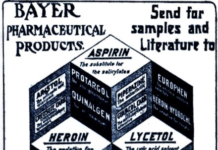Most people know the story of Rudolph the Red Nosed Reindeer – the most famous of Santa’s team. But does anyone know just how one reindeer’s nose could create a beam of light strong enough to lead a sleigh through darkness and severe weather? And why exactly is his nose red to being with? TLC’s “How Stuff Works” has developed its own theory based on a scientific trick called bioluminescence: “Animals can make their own light by mixing certain chemical compounds together to produce a glow. The reasons vary – fireflies, for instance, flash light at each other in order to attract mates, while some fish that live very deep in the ocean use light to locate prey.”
Rudolph’s nose would essentially be just like a normal reindeer nose with some added extras including a “thin, enclosed layer of a light-producing organ between the dermis and the epidermis. Inside this layer is luciferin, a light-producing substance, and luciferase, an enzyme that catalyzes the light-producing reaction. Most bioluminescent life forms, like fireflies, produce green light. The outermost part of Rudolph’s nose, however, would be a red phosphorescent layer – once the light-producing organ started creating light, the phosphorescent part of his nose would absorb the green light and emit a red light.”
Bioluminescence often requires another substance, such as oxygen, to make light. “Rudolph would breathe a lot of oxygen right near the light-producing organs, providing enough reactions for long, intensely shiny bursts of light.” (Read more on TLC)





